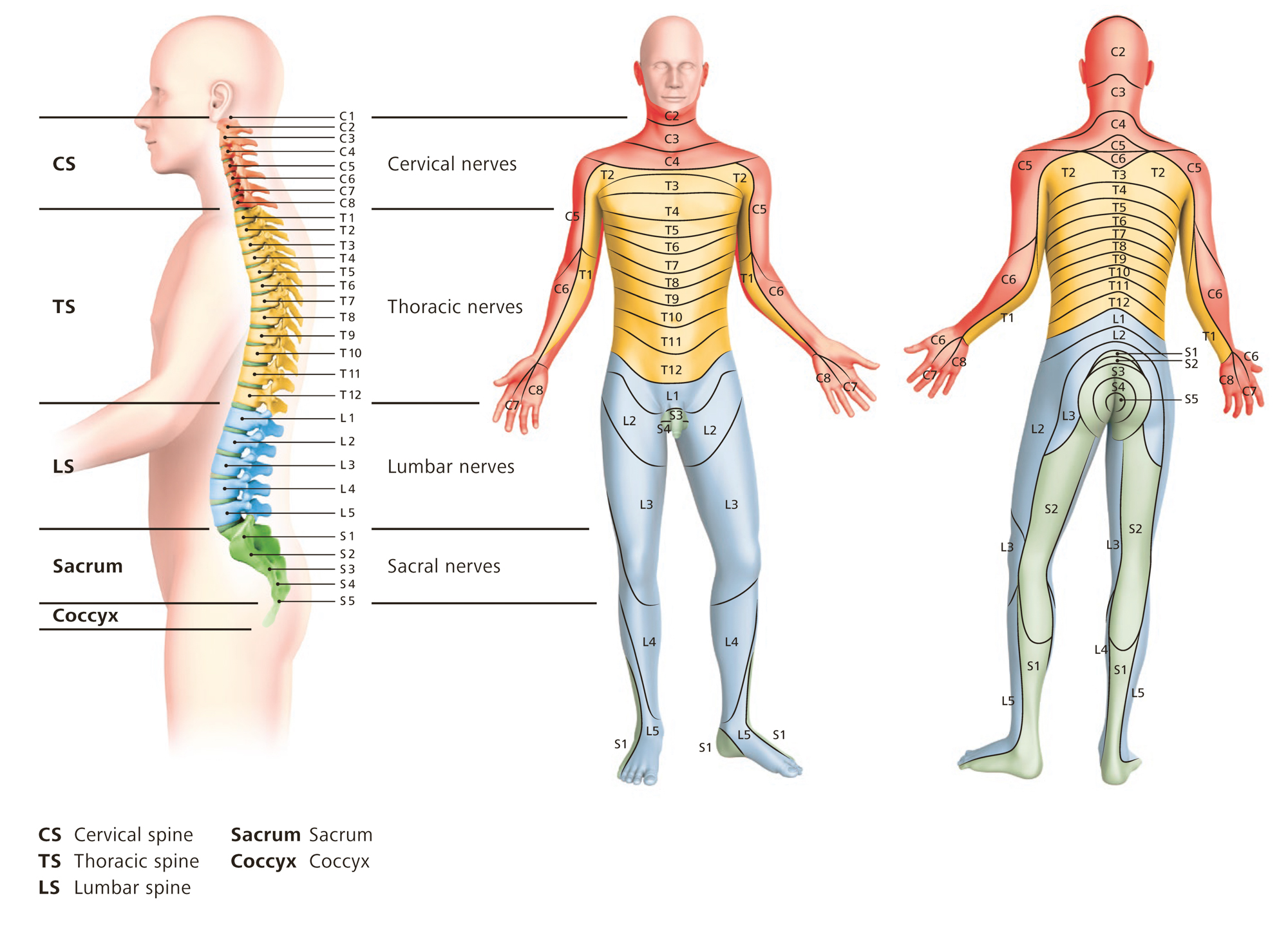
- 3 minutes to read
- 12 April 2021
The nervous system consists of a central, a peripheral and a vegetative part. The central nervous system consists of the brain and spinal cord. The nervous system is used for the acquisition, processing, storage and dissemination of information. Together with the hormone systems, it controls the activities of all the organ systems and is adapted and to meet environmental requirements. The spinal cord, as part of the central nervous system, plays a decisive part in the transmission of sensitive information to the brain and in the subsequent control of motor and autonomic functions.
Furthermore, the spinal cord itself is a nervous system that controls vital functions such as standing and walking, bladder, bowel and sexual functions, as well as breathing, temperature and circulation regulation.
The spinal cord is a 40 – 45 cm long, 8 – 10 mm wide and 5 – 7 mm thick rod in the vertebral canal. It emerges without any distinct boundaries from the medulla oblongata1 and ends in a conical shape at the level of the first to second lumbar spine as the conus medullaris. The vertebral canal offers the sensory spinal cord good protection against mechanical damage. The vertebral canal generally sits directly in the axis of movement which ensures that the spinal cord is not squeezed or twisted during extreme deformations of the spinal column (when performing sports such as acrobatics or gymnastics).
The spinal cord is pushed up within the bony spinal column as a result of which the sacral region2 lies in the area of the thoracic spine. There is no spinal cord in the lumbar spine, only the long roots of the lumbar and sacral segments.

The spinal cord can be structured in various sections on the basis of the associated spinal nerves emerging from it. Each of these sections can be divided into segments. A segment is a section of spinal cord from which the fibres for a pair of spinal nerves emerge on the right and left. Each section of the spinal cord is independent to a certain extent, but they are closely linked to other parts of the central nervous system.
Like the brain, the spinal cord is surrounded by a brain or spinal cord skin which is hard on the outside and soft on the inside. The cerebrospinal fluid flows between the skins of the spinal cord.
The structure of the spinal cord
The structure of the spinal cord is characterised by the butterfly-shaped, grey matter enclosing the central canal and the white matter surrounding it.
The grey matter primarily contains nerve cells, and the white matter contains the ascending and descending nerve fibres. The grey matter is the switching apparatus for the spinal cord. A distinction is to be made within the grey matter:
- The nerves which run through the anterior horn of the spinal cord supply the skeletal musculature, which contains the nerve cells that are responsible for the motor functions.
- The nerve fibres from the periphery of the spinal cord, which are responsible for sensory functions, reach into the posterior horn. In order to be perceived consciously, the sensory pulses / information must be conducted into the cerebrum. There, the pulses / information enter our consciousness as sensory perception.
- The white matter surrounds the grey matter in the centre and consists of nerve fibres containing medulla of different thicknesses. The white matter acts as the conducting connections within the spinal cord.

The autonomic nervous system

The term “autonomic” means that this part of the nervous system is not under the conscious control of an individual. The autonomic nervous system is responsible for vital functions because it controls or influences breathing, heart rate, circulation, bladder and bowel functions, metabolism, body temperature, important sexual functions, the kidneys and other organs or organ systems.
One talks about three parts: the sympathetic, parasympathetic and enteral systems. The latter regulates bowel motor responses. The sympathetic and parasympathetic nervous systems (vagus nerve und sacral parts S2 – S4) work antagonistically (against one another) in healthy people, although they are generally in a healthy balance. This balance is disrupted in people with spinal cord injuries; consequently, this imbalance may lead to many problems, some of them life-threatening.
Most frequent complications in autonomic nerve disorders
- Orthostatic hypotonia
- Upper and lower gastrointestinal dysfunction
- Respiratory problems
- Disturbed urination
- Body temperature dysregulation
- Sexual dysfunction
- Autonomic dysregulation / dysreflexia
- Hormonal dysregulation
- Disturbed defecation
1 extended cord = the part of the brain at the very bottom and back
2 lower-most part of the spinal cord

Be the first to comment!